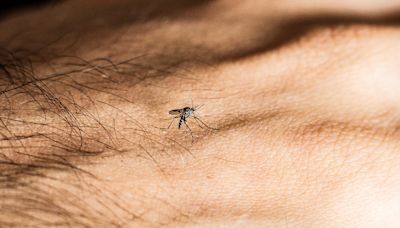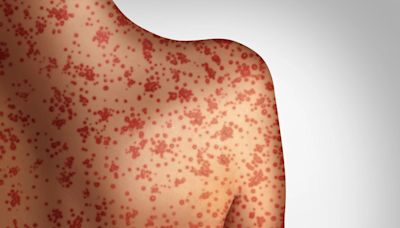Search results
- A simple cold or viral infection can cause a fever of 102°F to 104°F (38.9°C to 40°C) but isn’t usually a cause for worry. For infants, serious infections may cause no fever or even an abnormally low body temperature (below 97°F or 36.1°C). Usually what matters more than the fever is how your child is acting.
www.choa.org › parent-resources › everyday-illnesses
People also ask
Can a child have a fever if he has a virus?
What happens if a child has a fever?
What if my baby has a fever?
Sep 5, 2023 · Causes of High Fever in Children. If your child has a fever, chances are high that one of the following conditions caused it: Viral Infection. Viruses are the most common cause of fever in children, and they do not require antibiotics. A virus must run its course over several days. These infections include: Colds. Flu. Roseola. Chicken pox.
- 200 Lothrop St, Pittsburgh, 15213-2582, Pennsylvania
Aug 31, 2022 · August 31, 2022. When kids get sick, most of the time, viruses or bacteria cause their infections. While viral and bacterial infections can have similar symptoms, such as coughing, sore throat and fever, one big difference between the two is how they are treated.
Dr. Acker: Typically, a fever due to a run-of-the-mill virus can last from 24 hours to three to four days. Sometimes, fevers can last longer — even over a week — and it’s not necessarily a reason to be alarmed, as long as the child is not struggling with other symptoms, such as dehydration, shortness of breath, or severe lethargy or irritability.
- Julia Morrill
Jun 1, 2020 · Your child has a rash with the fever (not like the one described above, for that, go right to the emergency room). It’s most likely nothing to be worried about, but some viruses worry us more than others (like measles, or chicken pox) and some bacterial infections that need antibiotics (like strep throat, or cellulitis) can cause rashes.
- 4 Blackfan Circle, 4th Floor, Boston, 02115, MA
- hhp_info@health.harvard.edu
- (877) 649-9457
- Overview
- What are the symptoms of a viral fever?
- What causes a viral fever?
- How is a viral fever diagnosed?
- How are viral fevers treated?
- Should I see a doctor?
- The bottom line
A viral fever is any fever that’s caused by an underlying viral illness. Normal body temperature is 98.6°F (37°C). Anything a degree above this is considered a fever.
A variety of viral infections can affect humans, from the common cold to the flu. A low-grade fever is a symptom of many viral infections. But some viral infections, such as dengue fever, can cause a higher fever.
Viral fevers can range in temperature from 99°F to over 103°F (39°C), depending on the underlying virus.
If you have a viral fever, you might have some of these general symptoms:
•chills
•sweating
•dehydration
•headache
A viral fever is caused by infection with a virus. Viruses are very small infectious agents. They infect and multiply within the cells of your body. A fever is your body’s way of fighting off a virus. Many viruses are sensitive to shifts in temperature, so a sudden increase in your body temperature makes you less hospitable to viruses.
There are many ways that you can become infected with a virus, including:
•Inhalation. If someone with a viral infection sneezes or coughs near you, you can breathe in droplets containing the virus. Examples of viral infections from inhalation include the flu or common cold.
•Ingestion. Food and drinks can be contaminated with viruses. If you eat them, you can develop an infection. Examples of viral infections from ingestion include norovirus and enteroviruses.
•Bites. Insects and other animals can carry viruses. If they bite you, you can develop an infection. Examples of viral infections that result from bites include dengue fever and rabies.
•Bodily fluids. Exchanging bodily fluids with someone who has a viral infection can transfer the illness. Examples of this type of viral infection include hepatitis B and HIV.
Both viral and bacterial infections often cause similar symptoms. To diagnose a viral fever, a doctor will likely start by ruling out a bacterial infection. They can do this by considering your symptoms and medical history, as well as taking any samples to test for bacteria.
If you have a sore throat, for example, they might swab your throat to test for bacteria that causes strep throat. If the sample comes back negative, you likely have a viral infection.
In most cases, viral fevers don’t require any specific treatment. Unlike bacterial infections, they don’t respond to antibiotics.
Instead, treatment usually focuses on providing relief from your symptoms. Common treatment methods include:
•taking over-the-counter fever reducers, such as acetaminophen or ibuprofen, to reduce a fever and its symptoms
•resting as much as possible
•drinking plenty of fluids to stay hydrated and replenish fluids lost while sweating
•taking antiviral medications, such as oseltamivir phosphate (Tamiflu), when applicable
In many cases, a viral fever isn’t anything to worry about. But if you have a fever that reaches 103°F (39°C) or higher, it’s best to call a doctor. You should also call a doctor if you have a baby with a rectal temperature of 100.4°F (38°C) or higher. Learn more about managing fevers in babies.
If you have a fever, keep an eye out for the following symptoms, which all indicate a need for medical treatment:
•severe headache
•difficulty breathing
•chest pain
•abdominal pains
A viral fever refers to any fever that results from a viral infection, such as the flu or dengue fever. While most viral fevers resolve on their own within a day or two, some are more severe and require medical treatment. If your temperature starts reading 103°F (39°C) or higher, it’s time to call a doctor. Otherwise, try to get as much rest as possible and stay hydrated.
Read this article in Spanish.
May 7, 2022 · Overview. A fever is a temporary rise in body temperature. It's one part of an overall response from the body's immune system. A fever is usually caused by an infection. For most children and adults, a fever may be uncomfortable. But it usually isn't a cause for concern. For infants, however, even a low fever may mean there's a serious infection.
Sep 2, 2022 · For viral infections, fever-reducing medications, such as acetaminophen or ibuprofen, can reduce symptoms while the body fights off the virus. 2022 Mayo Clinic News Network. Distributed by...



